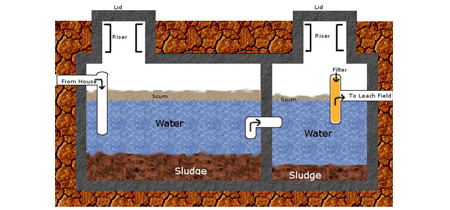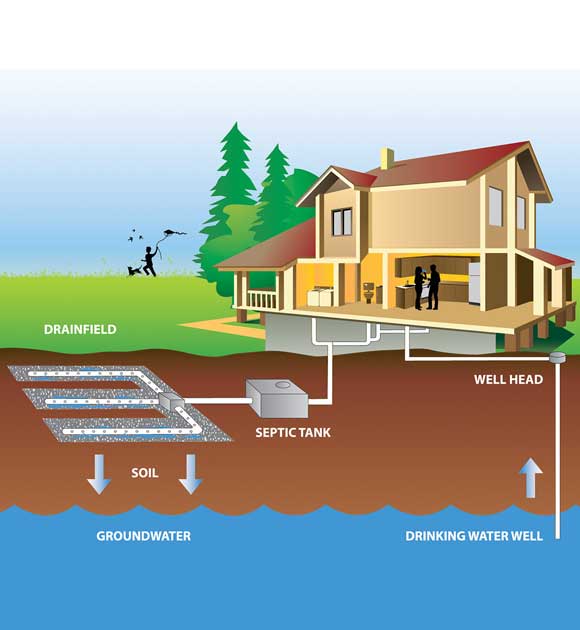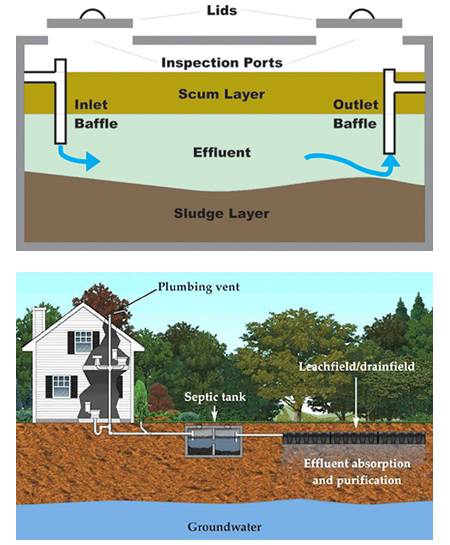SEPTIC SYSTEM INSPECTIONS CENTRAL & SOUTH FLORIDA
A septic system receives, treats, and disposes of unwanted wastewater and solids from a building’s plumbing system. Solids are partially broken down into sludge within a septic tank and are separated from effluent (water) and scum (fat, oil, and grease). Effluent regularly exits the tank into a drain field where it is naturally filtered by bacteria and reentered into the groundwater. Scum and sludge must be pumped periodically and should never enter the drain field.
Septic Inspections are performed by a third party, licensed, and insured septic inspection company.
SYSTEM INSPECTIONS FOR RESIDENTIAL SEPTIC SYSTEMS
PERFORMED BY A THIRD PARTY.
CALL TODAY TO SCHEDULE 561-512-7854
Evaluate Septic Components Inside the Home
Check the Absorption Field
Check Floats and Filters
Check Pump Tanks, Pumps and Alarms
Examine Inside The Treatment Tank
Check All Applicable Setbacks
When should a septic system be inspected?
The septic system should be inspected once a year, including as soon as the house is put on the market for sale. This will enhance the home’s value and avoid any liability issues that might result from a malfunctioning system. It is in the interest of a prospective buyer to insist that the septic system be inspected before they purchase the home if it has not been done recently.


What will we look for?
Since they perform their essential functions underground and out of sight, it is not uncommon for a homeowner to not have any idea where the septic system is located. This is usually not an issue except for when it comes time to inspect or pump the tank!
The septic tank is located using the following methods:
- An “as-built” drawing of the house should include the tank’s location. These drawings are often held in local health and zoning agencies. Old systems might not have any such record.
- The previous homeowner can be contacted.
- Newer tanks contain risers that rise visibly above the ground surface.
- A thin metal rod can be inserted into the earth and used to probe a suspected area. It is important to do this gently and only in soft, wet soil to avoid damaging the tank and associated pipes. A shovel can also be used.
- A metal detector is used if enough tank components are metal.
- A small radio transmitter is flushed down the toilet and followed by a receiver.
- The greenest grass in a yard is often directly above the septic tank.
What are baffles?
Baffles are septic tank components that slow wastewater entry sufficiently to ensure the distillation of solids, and prevent their release (as well as the release of scum) into the drain field. In doing so, they protect the absorptive quality of the soil and prolong the life of the septic system as a whole. They are normally made from the same material as the septic tank – either fiberglass, steel, or concrete.
Inspectors check baffles for the following:
- solids covering the baffle. This should be reported immediately, as it indicates overflow.
- erosion from chemicals and water flow.
- evidence of the previous overflow.
- sewage level should be several inches below the baffle top. A lower level indicates leakage and a higher level indicates blockage.



